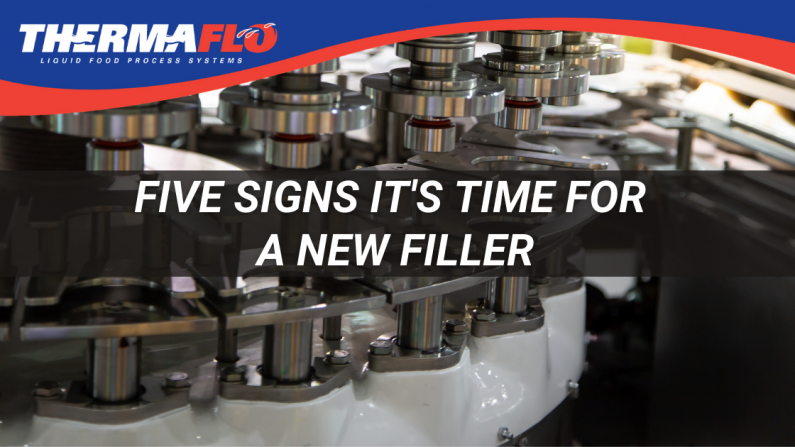We’ve worked with a wide range of companies who produce liquid food products, everything from milk, juice, beer, yoghurt, honey, edible oils, condiments and more. But even though the products are different, we still see the same issues and frustrations when it comes to fillers.
Over the years, we’ve come to identify five ‘tipping points’ that more often than not, indicate a filler upgrade or replacement is imminent.
1. Older equipment nearing the end of its life
Tipping point: When you have to employ a full-time maintenance engineer to keep your filler operating.
When maintenance costs increase to the point of needing an engineer devoted to keeping it operational, the filler’s days are (or should be) numbered.
While there are fillers out there that are still going strong after 20+ years, as a general rule, a filler that’s over five years old is likely due for an upgrade/replacement, even if it’s only to improve efficiency, take advantage of innovations, or to make room for growth.
2. Foaming or spillage when filling
Tipping point: Inconsistency in filling levels, there’s too much overfilling (and the associated wastage) or underfilling.
Some products, like milk, are especially prone to foaming, this is always a significant bugbear for a manufacturer. Fortunately, there is a range of innovations in modern fillers specially designed to minimise foaming.
In particular, we recommend low gravity level filling valves and keeping the filling head as low as possible to reduce the filling force, and therefore, agitation of the product. If foaming is a significant concern for you, it’s also worth considering foam dissipation methods, like an extended height filling bowl, or a vacuum ejection system.
Spilling issues can require a lot of troubleshooting to identify the source. It can be as simple as worn parts in need of replacement, or a manual adjustment of the filing heads, or there may be deeper issues that will continue to crop up again and again.
3. Lack of ongoing support from the supplier
Tipping point: Spare parts are delayed, or hard to source.
Older equipment is often prone to this, as newer models become the standard and older lines are phased out.
Alternatively, it can be caused by a lack of local distributors, or overseas suppliers exiting the market – something that’s happening more often due to the impact of COVID-19.
If you find yourself hoarding spare parts for an ageing filler, or if the availability/capability of your local support seems to be diminishing, it’s time to start investigating options.
4. New product lines the current filler can’t handle
Tipping point: The filler is the bottleneck, or there are quality control issues due to the filler.
There’s always a new product or formulation around the corner, and not all fillers are created equal when it comes to future-proofing. This is especially true with the speed of developments in functional foods, plant-based alternatives, and sustainable packaging.
5. Long downtime
Tipping point: changeover takes longer than 30 minutes.
With multiple SKUs and packaging sizes now the norm for many manufacturers, changeover needs to a simple process completed quickly. Ideally, changeover should take an operator around 15 minutes to complete so you can get back to production.
If you’ve got a question about upgrading or replacing a filler, or if you’d like to know about the options available. Please get in touch, we’re happy to help.
